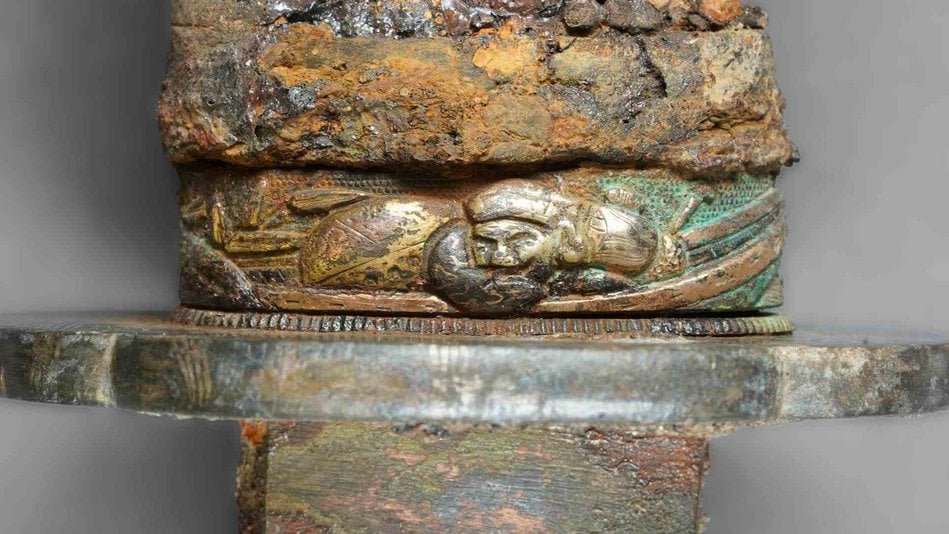
When archaeologists working in Molkenmarkt, Berlin’s oldest square, uncovered a cellar floor buried beneath rubble from World War II, the bridles, stirrups, and harnesses they found were hardly unusual. Such items were often hastily stashed away in the conflict’s waning days.
More surprising was the short sword they discovered beneath the former residential building on Stralauer Street. At first, the team from the Berlin State Office for Monument Preservation thought it was a ceremonial military saber. It was only after the weapon was analyzed by experts at the Museum of Prehistory and Early History that researchers realized they had something altogether unprecedented on their hands: a wakizashi sword, the likes of which were sometimes carried by samurai in 17th-century Japan.
View of the Wakizashi sword following its restoration. Photo: Berlin State Office for Monument Preservation/ Anica Kelp.
The sword suffered considerable damage from being buried for nearly 80 years. The handle was marred by excessive heat, and the blade was corroded in parts. Still, it showed excellent craftsmanship. The handle’s textile remained intact, as did the fabric and shagreen wrapping.
Further details emerged when the sword was x-rayed. Though the procedure did not reveal any blacksmith’s signature, it did show evidence that the sword was significantly shortened. The x-rays of the tang, the part of the blade that connects to the handle, showed two holes, though the existing handle is attached through only one of these. This implies the shortened blade once had a different handle, possibly dating it as far back as the 16th century.
X-ray of the Wakizashi sword with the two visible holes in the tang. Photo: Berlin State Office for Monument Preservation/ Anica Kelp.
Restoration efforts revealed that the sword’s grip claw was carved with the motif of Daikoku, a plump god of wealth and farming who is often depicted carrying a hammer and a sack of rice. Also of note were the decorative chrysanthemum flowers, symbolic of longevity and rejuvenation, marked on the guard. It was these details that enabled researchers to date the sword to the Edo period (1603–1868), during which Japan was largely closed to the outside world.
This poses the question: how did the sword, the likes of which were typically a status symbol reserved for samurais and dignitaries, end up in a Berlin basement? One suggestion offered by the Museum of Prehistory and Early History is that it was a gift of Japanese missions that visited the Kingdom of Prussia in the 19th century. Wilhelm I received two such missions: first, the 1862 Takenochi Mission, when he was king, and the 1873 Iwakura Mission, when he was emperor. One fact supporting this hypothesis is Molkenmarkt’s proximity to Berlin Palace.
“This discovery is yet another example of the surprising artifacts that are waiting to be unearthed beneath the soil of Berlin,” said Matthias Wemhoff, the museum’s director. “Who could have imagined that such a well-used and ornately decorated weapon would make its way to Berlin at a time when Japan was effectively shut off to the outside world and barely any European travelers visited the country?”